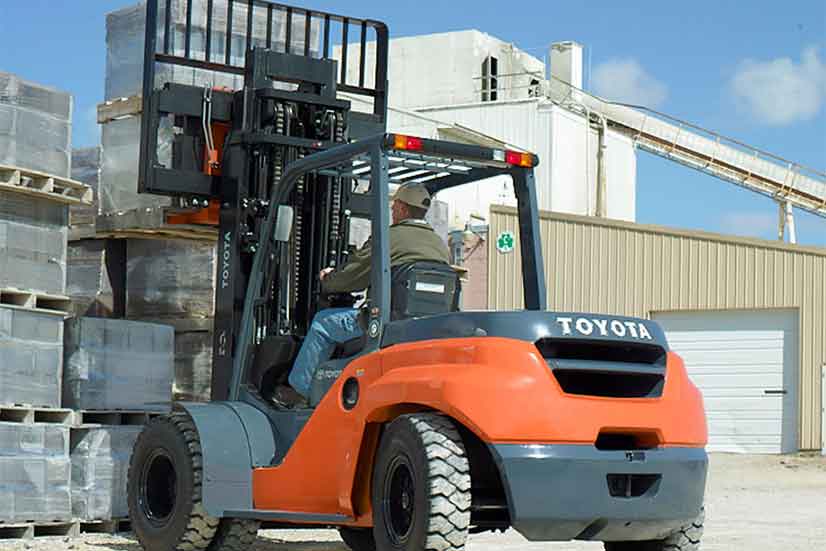In industrial settings and warehouse operations, forklift tires play a pivotal role. Beyond supporting loads and providing traction, forklift tires affect efficiency, safety, and the machine’s lifespan. This blog will explore the types of forklift tires available, the scenarios in which each type excels, and the consequences of neglecting forklift tire maintenance.
Types of Forklift Tires
Pneumatic Tires are filled with compressed air.
- Advantages: Pneumatic tires provide a smooth ride over rough terrains, excellent shock absorption, and enhanced traction and stability due to their larger surface area.
- Applications: Pneumatic tires are ideal for indoor and outdoor applications like construction sites, lumberyards, and shipping docks with uneven terrain.
Solid Rubber Tires contain solid rubber components.
- Advantages: Solid rubber tires are virtually puncture-proof, reducing the risk of downtime due to flats.
- Applications: These tires are great in manufacturing, warehousing, and distribution centers, where the forklifts predominantly operate indoors on smooth surfaces.
Cushion Tires, often called press-on tires, are solid rubber and have a metal band inside.
- Advantages: Cushion tires are compact and highly maneuverable, with a lower profile for increased visibility.
- Applications: Cushion tires are great in indoor environments such as warehouses, retail spaces, and manufacturing facilities.
Polyurethane Tires are lightweight tires made from plastic and rubber.
- Advantages: Polyurethane tires are non-marking, provide excellent traction on smooth surfaces, and resist cuts and tears.
- Applications: Polyurethane Tires are perfect in indoor environments such as food and beverage industries, electronics manufacturing, pharmaceutical facilities, and other applications where minimizing floor damage and noise is a priority.
Non-Marking Tires contain a combination of rubber and other materials that leave minimal marks on the floor surfaces.
- Advantages: Non-marking tires prevent scuffing and marking on floors, making them suitable for environments where appearance matters.
- Applications: Non-marking tires are often found in retail stores, exhibition halls, and cleanroom facilities.
Forklift Tire Maintenance
The consequences of neglecting forklift tire maintenance go beyond just the tires themselves. Old, worn, or damaged tires can affect your forklift’s performance in several ways.
- Fork Wear: Worn or damaged tires can lead to the dragging of forks while traveling.
- Undercarriage Damage: Lowered ground clearance due to damaged tires can expose the forklift’s undercarriage to debris.
- Reduced Lift Height: Worn or damaged tires can reduce the forklift’s lift height, causing potential product loss.
- Electrical Issues and Safety Hazards: Vibration or bouncing caused by tires in poor condition can lead to loosened bolts, connectors, and other components, including electrical connections, potentially causing electrical failure or other severe safety hazards.
The correct tires, regular inspections, and timely maintenance can help protect your forklift for years to come. If your forklift or fleet needs tires or maintenance, contact us today! We carry replacement forklift tires for almost any application and forklift parts for most makes and models.
Act now and save 15% on tires, seats, forks, and steel tanks during our Summer Savings Event.

